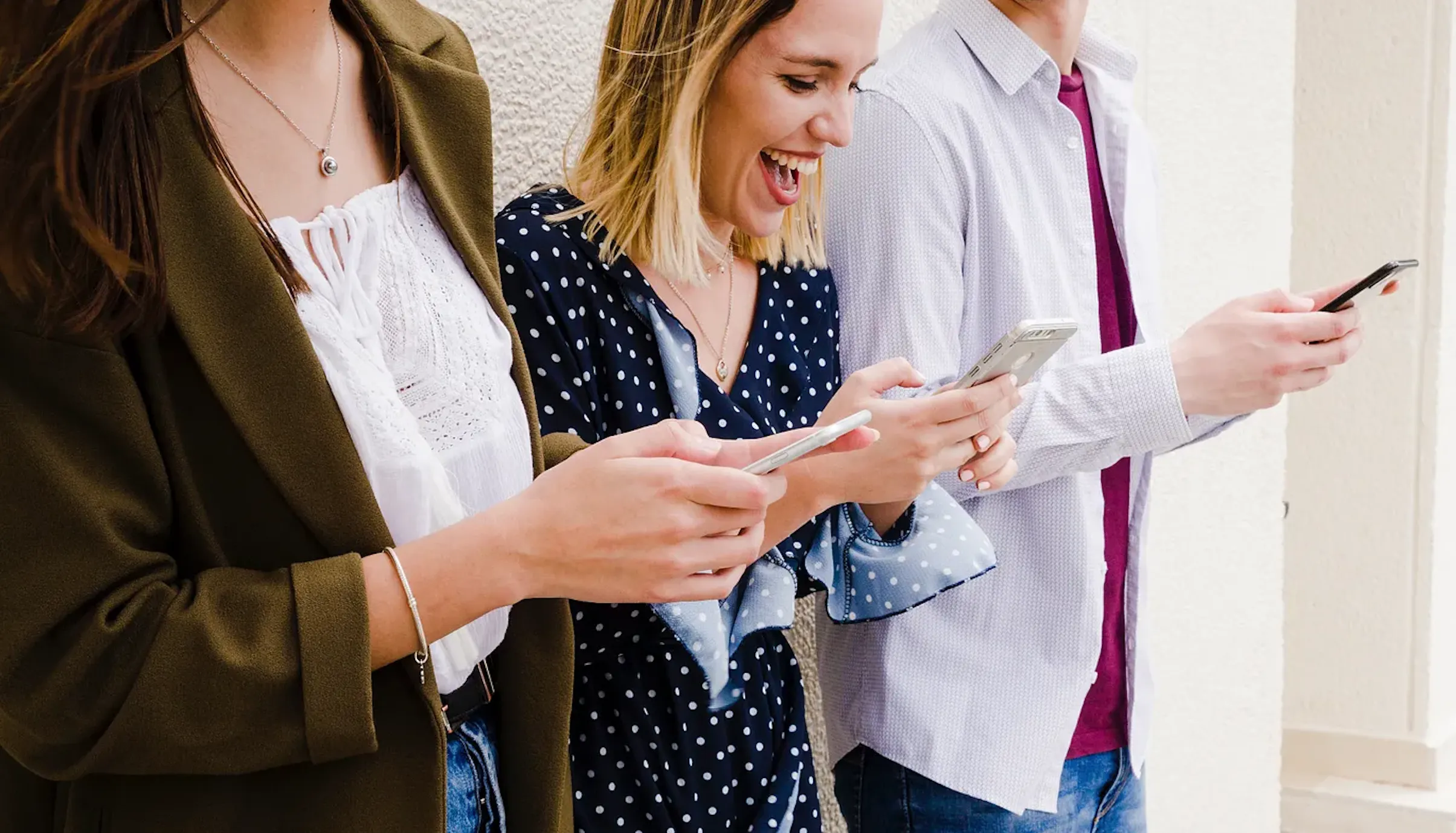How & Why Is Collecting Users' Insights Crucial for Your Business
Collecting user insights is vital for providing a personalised user experience. Gathering information directly from your target audience will help improve the user journey and content strategy.
Continuous development, driven by customer feedback, is a crucial component of any successful business strategy. But when it comes to identifying these insights, where do you turn? The easy answer is providing cusdev interviews, constant focus groups, or just voluntary surveys or interactions, but there is a tricky point.
Firstly, people participating in such research can be, on the one hand, not sincere enough — trying to be polite or not to look critical; on the other hand, they try to be helpful and notice all potential problems and mistakes, while at the same time losing their real user impression. They can help to find some platform’s inconveniences, but being in an artificial situation, they can skip what is really important. Also, participants of any focus group or custdev present just a tiny part of your audience. But where to get insights from real users in satisfactory amounts?
Continuous improvement based on user feedback is key to a strong business strategy. But when it comes to understanding user needs, where should you look?

Obvious solutions include customer development interviews, focus groups, or voluntary surveys. Yet, these methods come with challenges. Participants might not be entirely candid, may overanalyse, or simply represent too small a portion of your audience. While these can uncover usability issues, they often miss the subtle behaviours that matter most. So, where do you get scalable, authentic insights from your actual users?
One of today’s strongest approaches involves deriving real-time insights directly through your platform interactions. As digital marketing moves toward deeper audience understanding and AI-powered analysis, accessing meaningful audience signals is more critical than ever. But how do you translate engagement into strategic insight? And what tools make it easier?
Focusing on users’ direct insights is one of the current digital marketing trends you can’t ignore, especially as the world heightens its focus on AI and datafication. However, many companies struggle to understand how to collect and utilise this information effectively. For example, why would you pick user insights over third-party data when the latter often comes cheaper? And what tools can you add to your platform to gather such primary insights?
Going Through the Numbers
Brands can obtain data from various sources. The most accurate information is acquired directly and consensually from the customer through surveys, questionnaires, reviews, social media engagement, and website interactions.
Then you have second-party insights, which is very similar, except you’re using another company’s trusted first-party data. You interact with the company directly to obtain this information.
Third-party data is different still. This is information typically purchased through an external data aggregator that has no direct contact with the customers. Third-party cookies, tracking details like browser history and time spent online, were once common in search engines, although companies like Apple and Google are already beginning to phase them out.

And lastly, zero-party data is a relatively new data type that is almost identical to first-party. This involves information voluntarily and explicitly given by the customer, such as purchase intentions and communication preferences.
Why Direct User Insights Matter
Data benefits your business by providing reliable information collected directly from your target audience. That’s invaluable in a world where 81% of consumers prefer a tailored experience.
Brands must adapt their digital marketing strategies to offer more personalisation for their customers. From budgetary figures alone, we can see this trend taking shape. In 2023, around 22% of a digital marketing budget was allocated to personalisation. In 2024, that figure jumped to 40%. This highlights the significant importance of personalisation for both consumers and marketers.
Direct users’ insights give you a deeper understanding of customer preferences and habits. You can identify which channels they prefer to interact with and learn about their browsing and purchasing behaviour in real time, what exact content they like and why. These insights then allow you to refine your marketing and content strategy to include personalised outreach and targeted ad campaigns, creating a more tailored approach and correcting the roadmap. And a more personalised approach brings additional benefits, such as brand loyalty and user engagement.
In his recent publication, “The Impact of Personalization on Customer Loyalty and Retention,” Shezan Ahmed notes that “customers are more likely to make additional purchases and remain loyal to a business that personalizes their experiences.”
Meanwhile, user engagement through first-party data is another benefit of increased personalisation. Customers are more likely to engage with your platform when you know exactly what they wish.
By contrast, third-party data offers limited scope for personalisation. It does not come directly from your target audience, which means it provides little insight into the genuine wants and needs of your customers. This is why gathering first-party data is crucial.
Making the Most of User Insights
All sorts of companies can benefit from gathering first-party data. For example, sports apps, due to such insights, establish and sustain a likeable brand reputation — an important metric for clubs looking to cater to a diverse customer network.
Another example? Fitness apps that use live streaming feeds for at-home personal training (like Peloton) can adjust staff schedules to accommodate busier times, thanks to insights on when users like to train and what kind of instructor they prefer.
It’s evident that all of this is vital for companies in the entertainment industry. However, obtaining user insights can be difficult without adequate channels for user engagement.
Collecting user insights helps companies identify the following user metrics:
· Engagement levels
· Busiest traffic times
· Preferred communication channels
· Most popular film and TV genres
· Favourite sports to watch and bet on
· Overall opinions
Entertainment businesses can then use these metrics to refine their offerings and enhance user engagement through the use of first-party data.
User engagement is crucial for sports betting companies like Sky Bet and Paddy Power, where competition is fierce. If a sports betting app learns that its customers prefer to bet on tennis but have little interest in badminton, the site can then look to increase its coverage of tennis games (if it offers live streaming features) or broaden its betting markets for the most popular tournaments (like Wimbledon and the US Open). This data-driven marketing will likely increase customer retention and brand loyalty.
How to Collect User Insights in Five Ways
Implement a range of user insights collection strategies to gather a broad and varied scope of information from your customers.
Use AI for Insights Collection and Tagging
AI tools are on the rise. More than 92% of businesses are looking to increase their AI spending over the next three years. Fortunately, AI and analytics combine well.
You can use AI tools to gather vast troves of data, including customer purchase history and frequency of communication, at once. Automated algorithms track these metrics and record each time a customer interacts with your brand. They then collate this first-party data to build a profile of every customer, allowing you to personalise the experience for each user.
Tools like Bardeen use natural language to implement workflows that can scrape and enrich data in bulk. Other apps, such as Databricks, facilitate data analysis by learning your analysis habits and preferences.
But you’ll need somewhere to store the masses of data you collect from AI tools. That’s where data lakes come in. An alternative to the rigid structures of data warehouses, data lakes are more fluid and flexible. They can house large amounts of data and allow analysts to compare and extract insights more easily.
Send Out Surveys & Questionnaires
Of course, there are other manual methods of collecting first-party data. Surveys and questionnaires are classic examples of obtaining primary data right from the source. You can learn lots from your customers if they complete the form, helping you identify what aspects of your site are under and what are overperforming. Incentivise your users to complete the survey by offering a reward, such as a discount or a free in-app item.
Integrate community in-app chats
Chat rooms provide a unique setting for data collection. They allow app users to engage with your brand directly, offering unfiltered views on your services and voluntarily divulging preferences. Plus, the time stamps from each message tell you the busiest communication times.
Add Comment Sections
Similar to live chat rooms, companies can retrieve valuable information from comment sections. For example, a broadcaster could learn when users are most active via the number of comments over a given period. This would then allow them to show targeted ads at the most advantageous times.
Second Screens
Use the stunning experience of La Liga and use second screens
to offer a space where users can engage with others without leaving your platform. Instead of losing valuable data to messaging sites like X and WhatsApp, you can gain insights into customer behaviour by recording the interactions on your integrated second screen.
You’ve learned how to collect first-party data and why this process is crucial for your business. This is not one of those digital marketing trends that will fade quickly. Start implementing it in your customer success strategies now.
Please fill out the Get in Touch form if you'd like to integrate community chats and other tools for gathering user insights into your website or app. We'll be happy to help you find the best solution.
Boost your platform with
Watchers embedded tools for ultimate engagement
